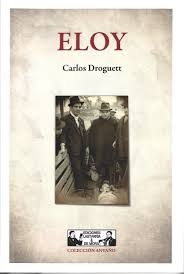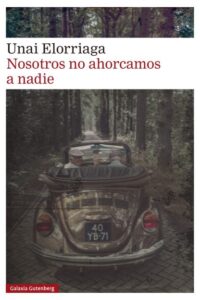
Idioma original: Español
Year of publication: 1960 (the definitive version is from 1982)
Valuation: Highly recommended
The first thing that came to mind when reading the back cover of Eloy were Ramón Saizarbitoria and his brief and magnificent A hundred meters The last hours of a fugitive, immersing himself in the memories of what he had experienced, were an all too familiar premise, right?
Giving it one more thought, I thought of Proust, of Faulkner, of Joyce, of Woolf and company. Because, in reality, everything has been invented for a long time and what remains is to make small modifications or variations that, it must be said, can sometimes surpass the original.
The point is that Eloy It is one of those cases in which the “copy” has such a high level that it would not be out of place to place it at the level of its predecessors.
As I pointed out in the first paragraph, Eloy tells the last hours of a fugitive who is surrounded on a farm located in the Chilean countryside. What elevates this novel to the category of “Art” is how Droguett narrates those hours: his use of the flow of consciousness, his poetic and torrential prose (cadence, vocabulary, rhythms, repetitions…), the construction of a dark atmosphere and oppressive, the combination of temporal and spatial planes, the alternation of the first and third person, thanks to a narrator who penetrates the life and thoughts of an Eloy who moves in those hours in solitude and in the infinite emptiness of a night that conditions the obsessive and almost hallucinatory nature of the narrative, etc.
Are we talking then about form over substance? It could be, but I am more inclined, in this case, to the form at the service of the substance. Because Droguett could have opted for a more or less linear and conventional narrative that would take us to those final hours of Eloy, but that linearity might not have been enough. Eloy is not a “flat” character and, therefore, the author has to draw a portrait that, more than a clear and perfect photograph, is a misplaced puzzle that the reader must put in order. To do this, he opts for different “angles”, for four moments in his life that define him as a human being in which violence and sensitivity, darkness and hope coexist: the first meeting with his partner, the revelation that drives him to crime, a massacre that he carries out with his crony Sangüesa and his first escape from the police.
But the portrait would be incomplete if we only looked at those moments: there are a series of actions and elements that are very present in the novel and that, at times, speak for themselves about the character. Thus, a perfume of violets, a visit to a hairdresser, horses, etc. are perfect metaphors of what Eloy is or tries to be.
I said before that everything has been invented for a long time and what remains is to make small modifications or variations. In the case of Droguett, I believe that what differentiates him from the authors mentioned above is the introduction of social and more or less existentialist elements. The references to Eloy’s social origin, to the situation of the Chilean countryside or the alienation of man are numerous. Serve as an example:
God did not make the houses, the criminal cities full of smoke, the men full of smoke, only the lonely lands, the clean forests, the mountains and the naked rivers, to climb them, to go through them, man is afraid, fatal and unbeatable fear and is locked in these horrible and final boxes, without air, without sun and without exit, even if they have doors, in the sick cities that make you sick.
I think that with this paragraph you can get an idea of Droguett’s style and of Eloy. It is not an “easy” book; to say otherwise would be lying, but it is a highly recommended book, both for its strict literary value and for what it represented as the introduction of “modernity” in Latin American literature. Let’s not forget that Eloy It was written in 1960 and, to give an example, The city and the dogs date of 1962, The obscene bird of the night 1970, etc. For pointing out, wow.
PS: I’m going to have to reread All those deaths. A “between it’s good and recommended” seems somewhat brief to me, given how much I liked the other two Droguett books that I’ve read.
Also from Carlos Droguett in ULAD: All those deaths and Dog’s legs
Source: https://unlibroaldia.blogspot.com/2024/10/carlos-droguett-eloy.html


